 W
WThe anima loci or animus loci is the "soul" of a place, its essential personality. A concept linked to the supernatural spirits of nature as residing in stones, springs, mountains, islands, trees, etc.
 W
WArchitectural mythology means the symbolism of real-world architecture, as well as architecture described in mythological stories. In addition to language, a myth could be represented by a painting, a sculpture or a building. It is about the overall story of an architectural work, often revealed through art.
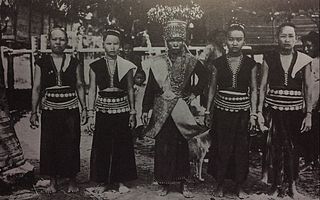 W
WA Bobohizan or Bobolian is a high priestess, a ritual specialist and a spirit medium in Kadazan-Dusun pagan rites. The office of Bobohizan or Bobolian, is also the chief preserver of Momolianism, i.e. the philosophy and way of life of the Kadazan-Dusun people.
 W
WA cosmic ocean or celestial river is a mythological motif found in the mythology of many cultures and civilizations, representing the world or cosmos as enveloped by primordial waters.
 W
WCreative Mythology is Volume IV of the comparative mythologist Joseph Campbell's The Masks of God. The book concerns "creative mythology", Campbell's term for the efforts by an individual to communicate his experience through signs, an attempt that can become "living myth".
 W
WDeutsch-Mythologische Landschaftsbilder is a two-volume book by Guido von List published in 1891. Its English translation is German Mythological Landscape Scenes.
 W
WThe dragon and daughter is a Danish folktale.
 W
WDream Analysis: Notes of the Seminar Given in 1928–1930 is a book by Swiss psychiatrist, Carl Gustav Jung. It was first published in English in 1984. In 1991, it was translated and published in the German language.
 W
WDziwożona is a female swamp demon in Slavic mythology known for being malicious and dangerous. Most at risk of becoming one of these demons after death were thought to be midwives, old maids, unmarried mothers, pregnant women who die before childbirth, as well as abandoned children born out of wedlock.
 W
WFat Lips is the name given to a legendary spirit dwelling in Dryburgh Abbey in Berwickshire, Scotland.
 W
WThe Flight of the Wild Gander: Explorations in the Mythological Dimension is a 1969 book by mythologist Joseph Campbell, in which he collects a number of his early essays and forwards. Essays include "Bios and Mythos", "Mythogenesis" and "The Symbol without Meaning".
 W
WFolklore in the Old Testament: Studies in Comparative Religion, Legend, and Law is a 1918 book by the anthropologist Sir James George Frazer, in which the author compares episodes in the Old Testament with similar stories from other cultures in the ancient world. While less well known than The Golden Bough (1890), Frazer's other major work, it is still considered a milestone in comparative folklore.
 W
WGermanic mythology consists of the body of myths native to the Germanic peoples, including Norse mythology, Anglo-Saxon mythology, and Continental Germanic mythology. It was a key element of Germanic paganism.
 W
WThe Inner Reaches of Outer Space is a 1986 book by mythologist Joseph Campbell, the last book completed before his death in 1987. In it, he explores the intersections of art, psychology and religion, and discusses the ways in which new myths are born. In writing the book, Campbell drew on transcripts of a series of lectures and conversations that he gave in San Francisco between 1981–1984, including legendary symposiums with astronaut Rusty Schweickart and with members of the Grateful Dead.
 W
WJoan the Wad is a mythological character in Cornish folklore. She is the Queen of the Pixies, which are tiny mythical creatures usually associated with the counties of Cornwall and Devon in England.
 W
WIn the Finnic religion, a karsikko was a set of markings made on a tree somewhere between a deceased person's home and their burial site, which they believed would prevent the dead individual's spirit from coming back.
 W
WKudreš is a small village in the municipality of Golubac, Serbia. According to the 2002 census, the village has a population of 193 people.
 W
WKuma Lisa or Lisa Patrikeyevna or Lisichka-sestrichka is a character who is a fox from Bulgarian and Russian folklore. She usually plays the role of the trickster, as an archetype. Many Bulgarian folk tales as well as authored works use the character of Kuma Lisa. In many tales Kuma Lisa is encountered with another character known as Kumcho Vulcho - a wolf which is opposite to her and very often suffers from her tricks.
 W
WAccording to the Turkic belief, kut, is a kind of force vitalizing the body. Through kut, humans are connected with the heavens. Further, the sacred ruler is believed to be endowed with much more kut than other people, thus the heaven would had appointing him as the legitimate ruler. Turkic Khagans claimed that they were "heaven-like, heaven-conceived" and possessed kut, a sign of the heavenly mandate to rule. Rulers of the Qocho were entitled "idiqut", meaning "sacred good fortune". It also existed in Mongols as suu. It was believed that if the ruler had lost his kut, he could be dethroned and killed. However, this had to be carried out without shedding his blood. This was usually done by strangling with a silk cord. This custom of strangling continued among the Ottomans.
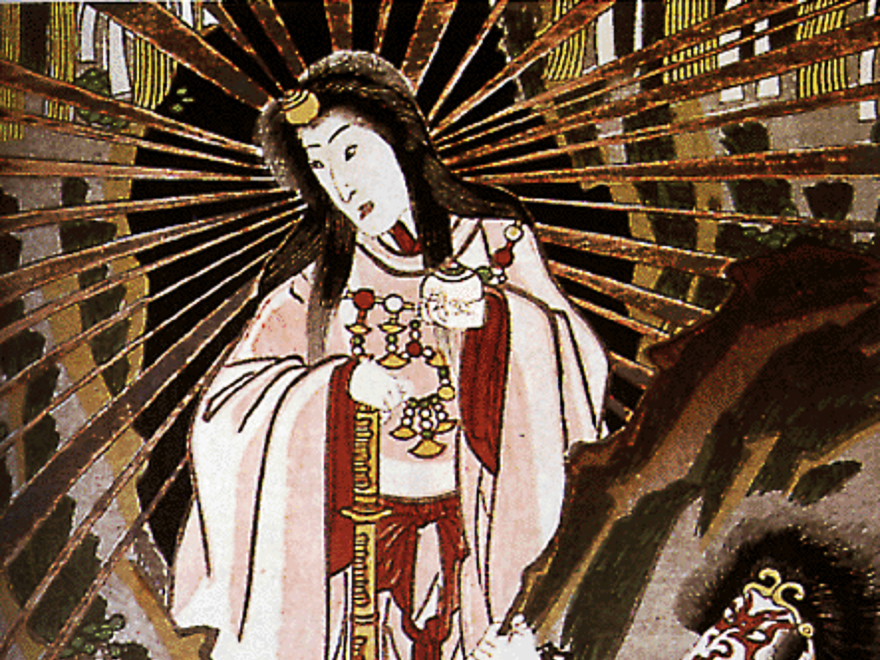 W
WKwaidan: Stories and Studies of Strange Things , often shortened to Kwaidan, is a 1904 book by Lafcadio Hearn that features several Japanese ghost stories and a brief non-fiction study on insects. It was later used as the basis for a 1964 film, Kwaidan, by Masaki Kobayashi.
 W
WLazavik is a creature of Belarusian mythology.
 W
WLondon lore: the legends and traditions of the world's most vibrant city is a 2008 book about the folklore and history of London by Steve Roud. Another edition was published in 2010.
 W
WMan and His Symbols is the last work undertaken by Carl Jung before his death in 1961. First published in 1964, it is divided into five parts, four of which were written by associates of Jung: Marie-Louise von Franz, Joseph L. Henderson, Aniela Jaffé, and Jolande Jacobi. The book, which contains numerous illustrations, seeks to provide a clear explanation of Jung's complex theories for a wide non-specialist readership.
 W
WManussiha, is a Burmese half-lion half-man mythical creature that is symbolic of a guardian, usually found guarding the four corners of a pagoda. Manussiha is a combination of Pali Manussa (man) and Siha (lion). It has a human head and torso and lion hindquarters. Thus, it can be called a Burmese sphinx.
 W
WMythology: Timeless Tales of Gods and Heroes is a book written by Edith Hamilton, published in 1942 by Little, Brown and Company. It has been reissued since then by several publishers, including its 75th anniversary illustrated edition. It retells stories of Greek, Roman, and Norse mythology drawn from a variety of sources. The introduction includes commentary on the major classical poets used as sources, and on how changing cultures have led to changing characterizations of the deities and their myths. It is frequently used in high schools and colleges as an introductory text to ancient mythology and belief.
 W
WMyths to Live By is a 1972 book, a collection of essays, originally given as lectures at the Cooper Union Forum, by mythologist Joseph Campbell between 1958 and 1971. The work has an introduction by Johnson E. Fairchild.
 W
WNavagraha are nine heavenly bodies and deities that influence human life on Earth in Hinduism and Hindu astrology. The term is derived from nava and graha. Note that the Earth, Uranus and Neptune are not included in the Navagraha. The seven days of the week in the Hindu calendar also correspond with the Navagraha, and are named accordingly in various languages of the Indian subcontinent.
 W
WNebris is a fawn skin, similar to an aegis, originally worn as a hunter's clothing item and later attributed to Dionysus.
 W
WThe noderabō is a Japanese yōkai from Toriyama Sekien's Gazu Hyakki Yagyō and is thought to be a yōkai that appears at abandoned temples.
 W
WOld Turtle is a 1992 book by Douglas Wood about Creation and the nature of God.
 W
WOtoroshi are a Japanese yōkai that appear in several yōkai emaki, such as the Hyakkai Zukan by Sawaki Suushi and the Gazu Hyakki Yagyō by Toriyama Sekien (1776).
 W
WAccording to Tibetan Buddhist myth, Gyalpo Pehar is a spirit belonging to the gyalpo class. When Padmasambhava arrived in Tibet in the eighth century, he subdued all gyalpo spirits and put them under control of Gyalpo Pehar, who promised not to harm any sentient beings and was made the chief guardian spirit of Samye during the reign of Trisong Deutsen. Pehar is the leader of a band of five gyalpo spirits and would later become the protector deity of Nechung Monastery in the 17th century under the auspices of the Fifth Dalai Lama.
 W
WRagnarok: The Age of Fire and Gravel is a book by Minnesota politician Ignatius L. Donnelly published first in 1883. It is a companion to the more well-known work Atlantis: The Antediluvian World.
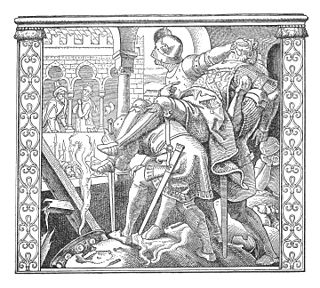 W
WRüdiger von Bechelaren is a legendary hero of German mythology immortalised in the Nibelungenlied saga. Serving as the Austrian Margrave of Pöchlarn and a member of Etzel's court, he becomes conflicted after swearing oaths to uphold two factions that ultimately go to war against each other.
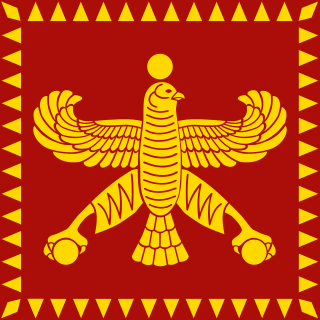 W
WShahbaz is the name of a fabled bird in Iranian mythology. It is described as having a body similar to an eagle, being bigger in size than a hawk or falcon and having inhabited the Zagros, Alborz and Caucasus mountain ranges of Iran. In ancient Persian mythology, the Shahbaz was a god who helped the Iranian peoples and guided the Faravahar to Greater Iran. During the Achaemenid era, especially during the rule of Cyrus the Great, the Persian imperial flag was rectangular in shape, divided kite-like into four equal triangles alternating between two colours; in excavations at Persepolis, archaeologists found a standard depicting a Shahbaz or golden eagle with open wings—the current belief is that this was the official symbol of the Iranian empire under Cyrus the Great and his heirs.
 W
WSieidis are Sami cultural items, usually a rock with unusual shape. Sieidis are found in nature in certain sacred places, for example at the sea or river beaches or on the mountain. The word sieidi has also been used for holy rocks or wooden figures that have undergone some processing. The victory was a symbol of the divine power ruling over the natural resources that humans needed for their survival. Samis sacrificed parts of their catch at sea to get a successful hunting or fishing in the future.
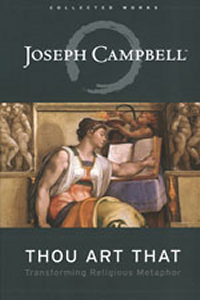 W
WThou Art That is a book by Joseph Campbell exploring the mythological underpinnings of the Judeo-Christian tradition. It was edited posthumously from Campbell's lectures and unpublished writing by Eugene Kennedy.
 W
WUsil is the Etruscan god of the sun. This name appears on the bronze liver of Piacenza, next to Tiur, the moon. Another iconic depiction features Usil rising out of the sea, with a fireball in either outstretched hand, on an engraved Etruscan bronze mirror in late Archaic style, formerly on the Roman antiquities market. On Etruscan mirrors in Classical style, Usil appears with a halo.
 W
WThe following is a list of fictional or mythological winged horses.
 W
WZlydzens are hazardous creatures in Belarusian mythology. These mythological characters often live under the masonry stove.